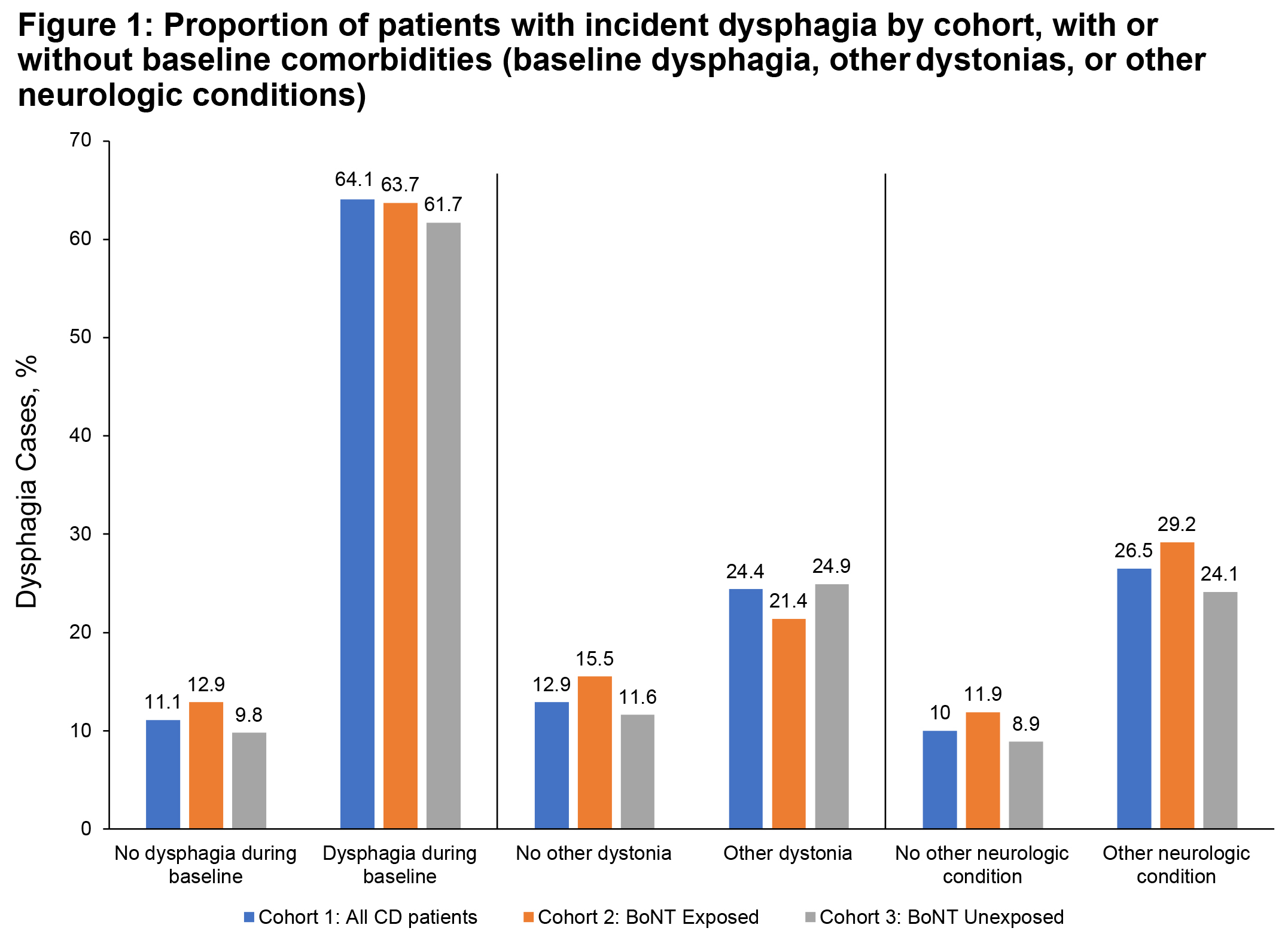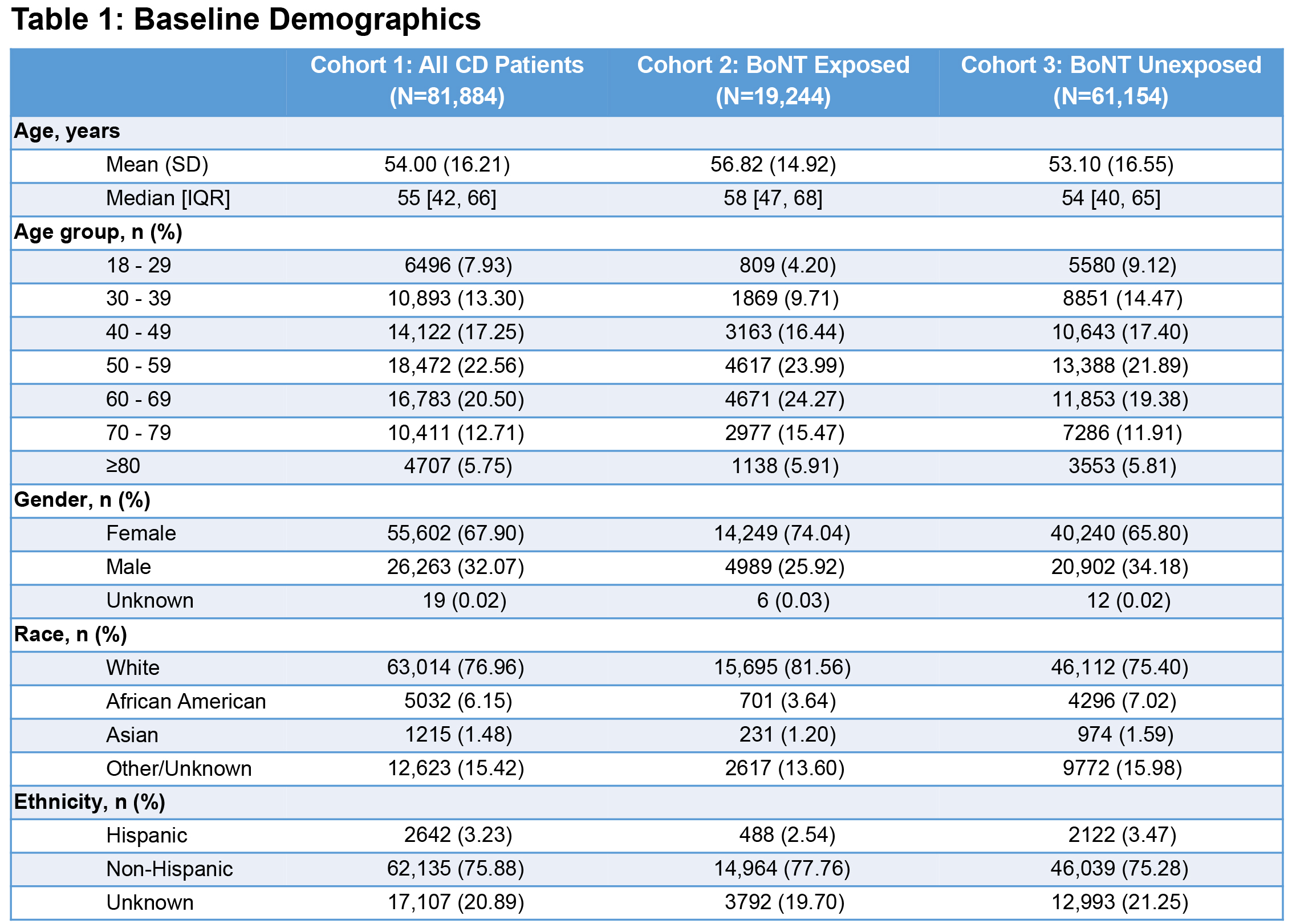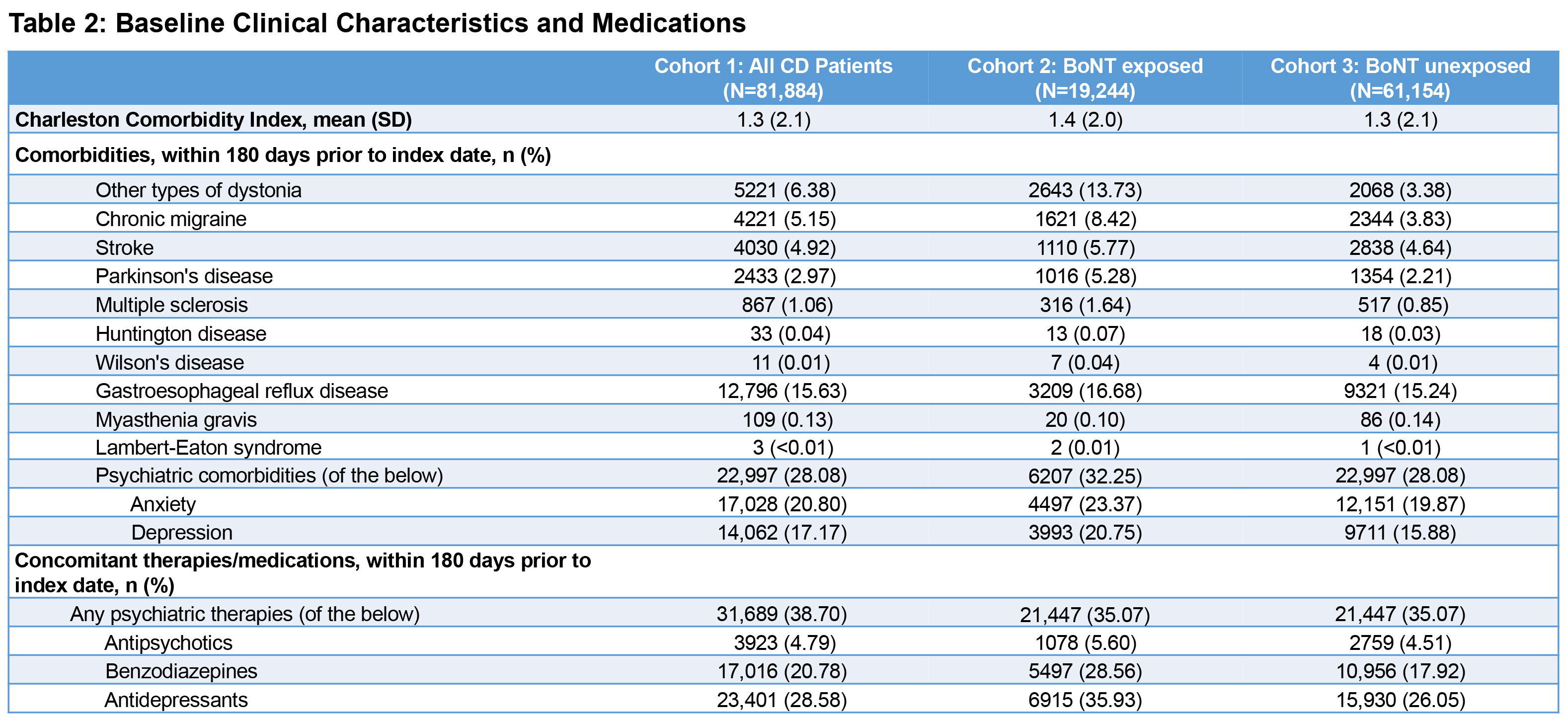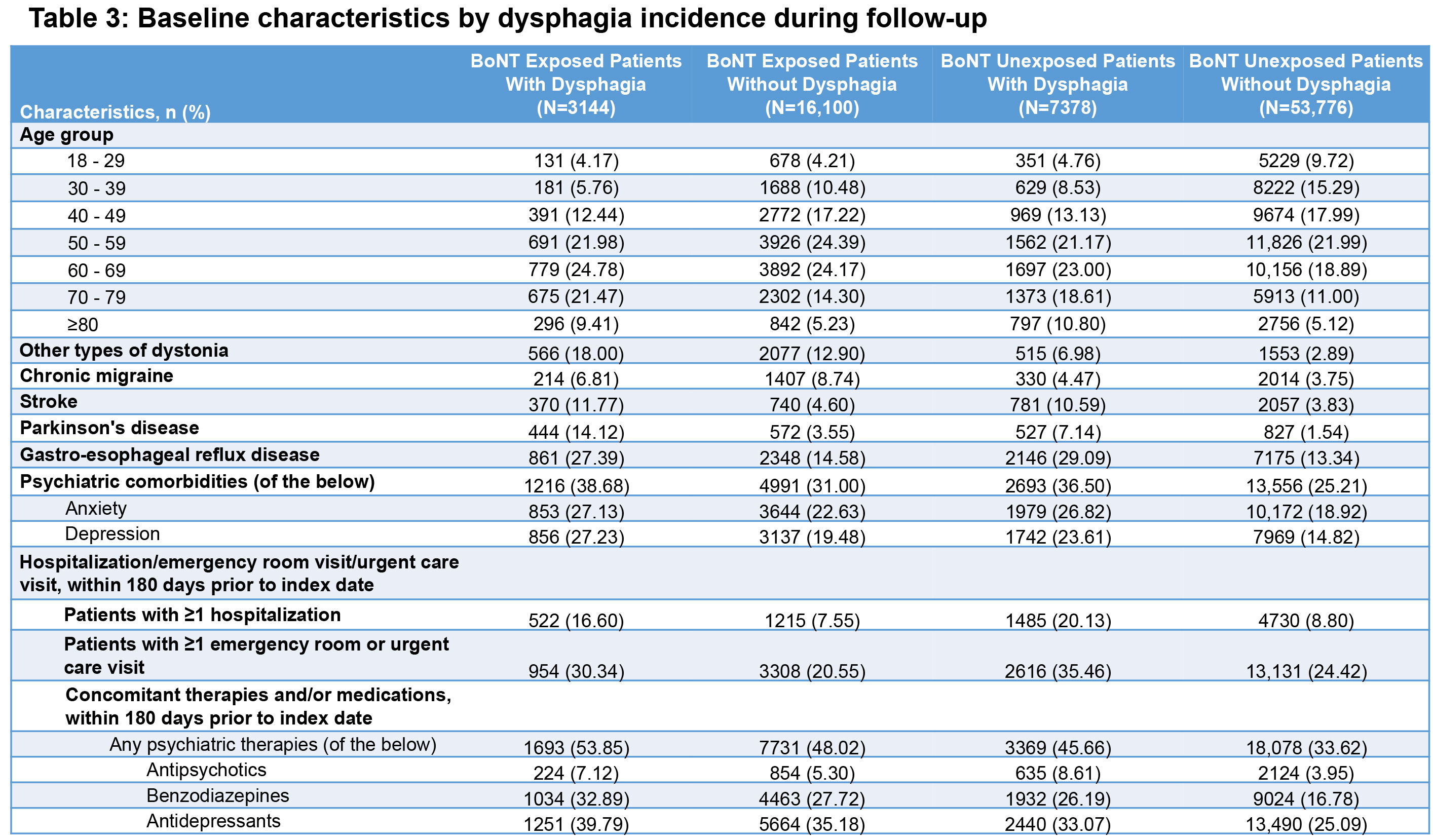Category: Dystonia: Clinical Trials and Therapy
Objective: Describe real-world incidence of dysphagia and other comorbidities in adults with cervical dystonia (CD) treated and not treated with botulinum neurotoxin (BoNT).
Background: Dysphagia is prevalent in patients with CD and an adverse event reported in BoNT CD trials. Real-world studies can provide data on incidence of dysphagia and comorbidities in more heterogenous populations compared with clinical trials (13%-19%).
Method: This retrospective cohort study used longitudinal patient-level data from the Optum Market Clarity database and included >700 hospitals and >7000 clinics in the US. Patients aged ≥18 y with ≥2 ICD-10 CD diagnoses ≥30 d apart during the study (1/1/2017-9/30/2021) and ≥180 d of continuous health plan enrollment prior to cohort entry date (CED; first CD diagnosis coding during study) were included. Cohort 1: all patients with CD. Cohorts 2 and 3 (mutually exclusive): BoNT-exposed (date of BoNT injection in the neck area +16 wk, excluding patients who received BoNT 12 wk before CED) and BoNT-unexposed CD patients, respectively.
Results: Included were 81,884 CD patients in Cohort 1 (mean age 54 y, 68% female, 77% White), 19,244 in Cohort 2, and 61,154 in Cohort 3. Relative to Cohort 3 (BoNT-unexposed), Cohort 2 (BoNT-exposed) had more patients in older age groups [table1] with comorbidities [table2] including chronic migraine and other neurologic disorders, but fewer males and African Americans [table1]. In Cohort 2, CD patients with continuous enrollment for ≥12 mo (73%) and ≥24 mo (53%) received BoNT for a mean±SD of 3.0±1.6 and 4.7±2.9 injection cycles, respectively. Reported dysphagia rates during the study were 13.7% (Cohort 1), 16.3% (Cohort 2), and 12.1% (Cohort 3). Across cohorts, incident dysphagia was more prevalent in patients with other dystonias, neurologic conditions, or dysphagia at baseline [figure1]. Patients diagnosed with dysphagia during follow-up were older with higher baseline comorbidity rates [table3].
Conclusion: Real-world, heterogenous patients with CD may have occurrence of dysphagia whether exposed or not exposed to BoNT and which may be related to risk factors such as baseline dysphagia and other comorbidities. A limitation of this analysis is that Cohort 2 may have included a higher proportion of older patients with comorbidities, and likely more severe disease, relative to Cohort 3.
To cite this abstract in AMA style:
M. Sadeghi, A. Ukah, E. Yue, K. Becker Ifantides, N. Huang, J. Lee, R. Barbano. Incidence of dysphagia and comorbidities in patients with cervical dystonia, analyzed by botulinum neurotoxin treatment exposure [abstract]. Mov Disord. 2023; 38 (suppl 1). https://www.mdsabstracts.org/abstract/incidence-of-dysphagia-and-comorbidities-in-patients-with-cervical-dystonia-analyzed-by-botulinum-neurotoxin-treatment-exposure/. Accessed October 16, 2025.« Back to 2023 International Congress
MDS Abstracts - https://www.mdsabstracts.org/abstract/incidence-of-dysphagia-and-comorbidities-in-patients-with-cervical-dystonia-analyzed-by-botulinum-neurotoxin-treatment-exposure/




